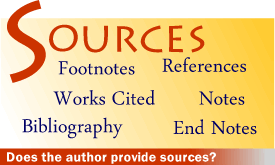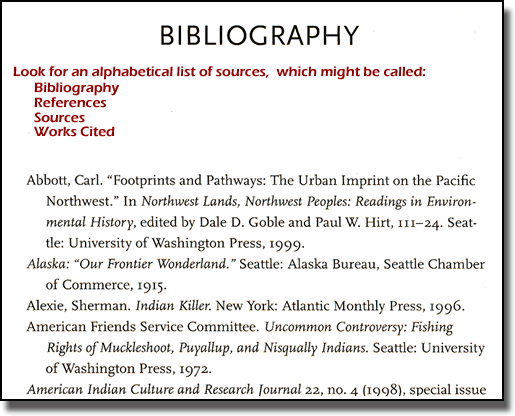 ASAP: Sources
ASAP: Sources
Insist on Documentation: Check for Sources
Most of the non-fiction you use for research will be secondary. Secondary books contain information that the author has learned about and compiled from other sources. A trustworthy author will always list the sources he or she used to write the book. These sources will be provided in a list called References, Sources, Works Cited, Bibliography, Notes, or something similar.
You might find the sources listed as notes in the form of footnotes, which are at the bottom of each page, or as endnotes, which are either at the end of each chapter or the end of the book.
Skim the list to see what kinds of sources the author used. If this book is about global warming, for example, and most of the sources in the list are from popular sources (like Wikipedia, and Newsweek), then the book may not be as credible as a book that lists sources from university presses and scholarly journals.
If you're using e-books from one of your library services, such as Netlibrary, look for sources the same as you would for a print book.

Academic books often have a separate list of sources arranged alphabetically:


